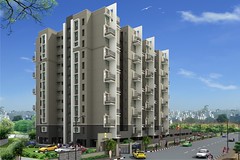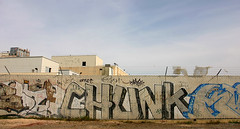After the pandemic, Mumbai’s real estate market reached all-time highs in quantity and cost.
Bengaluru: A 17-acre plot of land in central Mumbai that was formerly home to a textile mill was sold by DLF Ltd. to Lodha Developers Ltd. for Rs 2,725 crore eleven years ago. This year, a developer based in Gurgaon, the largest listed realtor in India, announced that it would be returning to the busiest real estate market in the nation.
DLF and Trident Group, a builder based in the National Capital Region (NCR), are collaborating on a slum rehabilitation project in the suburban Mumbai area.
DLF wants to diversify beyond Gurgaon amid a housing boom if its 2012 decision was to pull out non-core markets to concentrate on its home ground at the beginning of a multi-year residential slowdown. Mumbai would naturally be its first destination.
It propels you to a different scale and price point because you are the financial capital. We finally took the risk after examining opportunities in recent years, said Aakash Ohri, DLF’s group executive director and chief business officer.
In a similar vein, Godrej Properties Ltd. is situated in Mumbai. After assembling a sizable portfolio of projects in the NCR, the company will focus on its home market. The company’s chief executive officer (CEO), Gaurav Pandey, stated, “We have done about seven transactions in Mumbai in the last two years, and we are optimistic because the market has seen good price and volume growth.”
The Mumbai Metropolitan Region (MMR) secured the highest percentage of sales as the housing market recovered and reached all-time highs following the pandemic. Premium and luxury projects have been a major factor in MMR sales. It comes as no surprise that seasoned developers from MMR and beyond want a piece of the action.
MMR is undoubtedly a difficult market to break into. Though the costs are higher than in Bengaluru and the NCR, the profit margins are better. Getting project approvals can be difficult, and finding land can be difficult. Still, it is a market that cannot be disregarded, as Ohri alluded to.
Deliverer from B’lore
Most lenders and institutional investors became cautious about investing in Mumbai, preferring to concentrate on more stable markets in south India, following the non-banking financial company Infrastructure Financing and Leasing Service Ltd.’s repeated defaults in 2018. These events sent shockwaves through the financial services sector.
Developers in Mumbai had the highest level of leverage and NBFCs had the greatest overall exposure to the city’s real estate market. Post-pandemic, that was different. Opportunities for new and experienced developers were presented by the turmoil in MMR that led to the collapse of many developers.
Consider the Prestige Group. The Bengaluru-based developer has acquired the troubled projects in Mumbai from banks, investors, developers, and the National Company Law Tribunal.
With sales in Mumbai of Rs 2,700 crore in 2022-2023, it plans a 25-30% growth this year. “Sales velocity will follow if you choose the locations well and price it sensibly,” stated Venkat Narayana, CEO of Prestige Group. “The demand is good.”
Puravankara Ltd., a different developer based in Bengaluru started its first project in Mumbai in 2021 and is searching for mid-segment and premium acquisition opportunities.
Group CEO Abhishek Kapoor stated that although there are obstacles to overcome before entering Mumbai, there are lucrative opportunities. In Mumbai, the average price realization is at least Rs 15,000 – 25,000 per square foot, whereas in other markets it is Rs 8,000–10,000.
We are accustomed to seeing a lot of building, but Mumbai adds value and margins, and it will play a bigger role in our future growth, says Kapoor.
Many developers currently just want to take advantage of the value that the luxury market offers.
The opulent peak
The year, the prices of the sea-view homes in Lodha Malabar, an under-construction project on Walkeshwar Road in South Mumbai, set a benchmark at Rs 1.5 lakh per square foot.
Private purchasers paid between Rs 250 and Rs 350 crore for several apartments. The biggest developer in MMR is Macrotech Developers Ltd., which offers projects under the Lodha brand. In 2022-2023 the company made Rs 12,064 crore in sales, with Rs 10,000 crore coming from Mumbai alone. Homes costing Rs 5 crore or more account for about 40% of its revenue.
“There is a strong demand for larger, luxurious homes, particularly among families who have always resided in their ancestral homes,” Prashant Bindal, chief sales officer of the company, stated.
There is ample room for high-caliber developers in the premium and luxury segments because there are not enough players in MMR to meet demand. Anuj Puri, chairman of the real estate advisory Anarock Group, said, “It is like a combination of two or three cities within it, and there are discerning buyers who are willing to pay for premium projects.”
Every six months, Mumbai has recorded sales of luxury homes worth approximately Rs 5,300 crore since 2018. That doubled in the first half of 2023, as sales of homes priced at Rs 10 crore and above increased by almost 50% to Rs 11,400 crore, per a July report from Sotheby’s International Realty and CRE Matrix.
The ultra-luxury market, with prices ranging from Rs 40 crore to Rs 70 crore expanded even more quickly.
Developers and analysts predict that the luxury home market will continue to grow. “The way the financial services sector has gained post-COVID has had an immediate effect on buying real estate.” The financial services sector’s post-COVID gains directly affect purchases. According to Amit Bahgat, managing director (MD) and CEO of ASK Property Investment Advisors, the luxury market will grow as wealth is generated.
Competitors?
MMR has the highest sales and launches compared to NCR and Bengaluru. Unsold inventory has increased, but that’s because the rise in launches has surpassed sales, said Pankaj Kapoor, MD of Liases Foras.
Yes, other markets are catching up, especially Gurgaon. A 10,000-square-foot apartment in DLF’s Camellias project on Golf Course Road was sold for RS 100 crores, setting a new price record of Rs 1 lakh per square foot.
Thus, Gurgaon might eventually give Mumbai serious competition, according to DLF’s Ohri.





